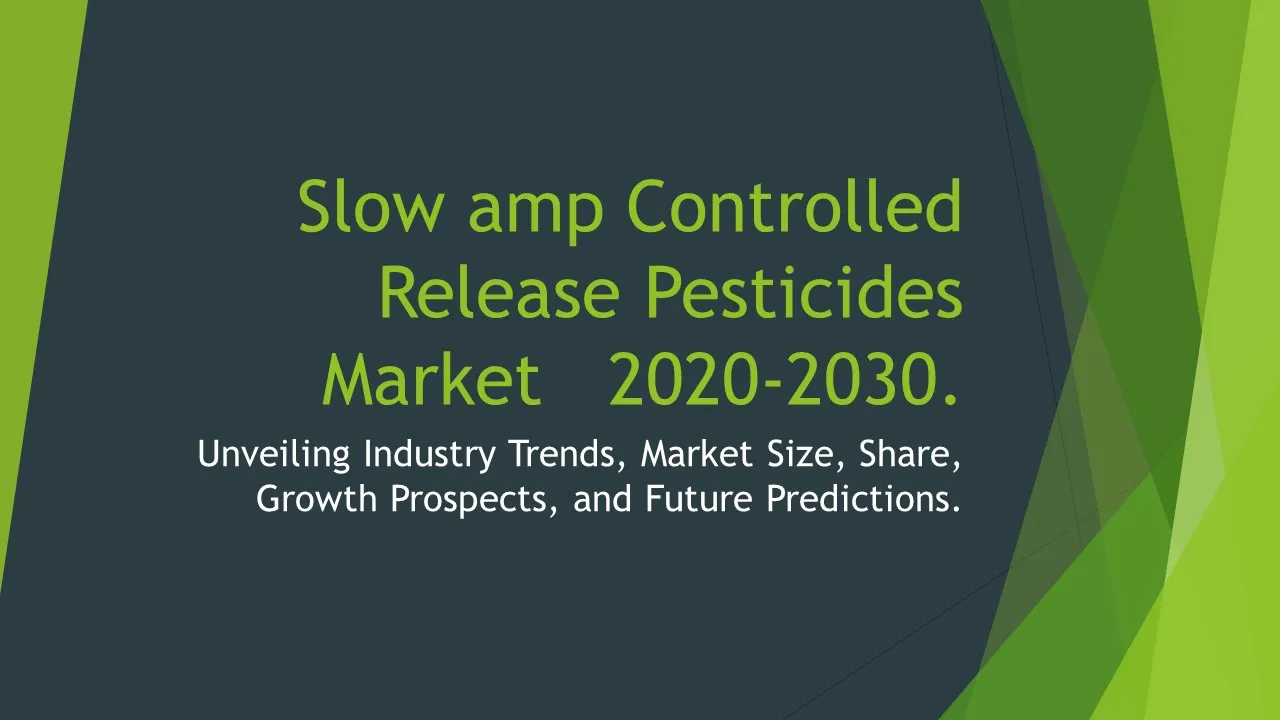Feed Phytase
Feed Phytase Market Segments - by Product Type (Granular Feed Phytase, Liquid Feed Phytase, Powder Feed Phytase, Pellet Feed Phytase, Microencapsulated Feed Phytase), Application (Poultry Feed, Swine Feed, Ruminant Feed, Aqua Feed, Pet Food), Distribution Channel (Direct Sales, Indirect Sales), Ingredient Type (Granular Feed Phytase, Liquid Feed Phytase, Powder Feed Phytase, Pellet Feed Phytase, Microencapsulated Feed Phytase), and Region (North America, Europe, Asia Pacific, Latin America, Middle East & Africa) - Global Industry Analysis, Growth, Share, Size, Trends, and Forecast 2025-2035
- Report Preview
- Table Of Content
- Segments
- Methodology
Feed Phytase Market Outlook
The global Feed Phytase market is projected to reach approximately USD 900 million by 2035, with a compound annual growth rate (CAGR) of around 8.5% during the forecast period from 2025 to 2035. This growth can be attributed to the increasing demand for high-quality animal feed, driven by the rapid growth of the livestock and aquaculture industries globally. The rising awareness about the nutritional benefits of phytase in animal diets, along with the growing emphasis on sustainable farming practices to reduce environmental impact, is significantly contributing to market expansion. Furthermore, the ongoing advancements in biotechnology are enabling manufacturers to produce more effective and efficient phytase products, further propelling market growth. With the rising population and the consequent increase in meat consumption, the need for feed additives, including phytase, is expected to rise substantially.
Growth Factor of the Market
Several key factors are fueling the growth of the Feed Phytase market. Firstly, the demand for animal protein is witnessing an upward trend due to population growth and changing dietary preferences. As consumers increasingly shift towards protein-rich diets, the need for efficient feed additives like phytase becomes critical for livestock producers looking to maximize output without increasing feed costs. Secondly, the rising awareness regarding the environmental sustainability of animal farming practices is driving the adoption of phytase, as it helps reduce phosphorus excretion from animals, thereby minimizing the impact on the environment. Additionally, technological advancements in enzyme production are enabling manufacturers to develop more potent formulations that offer better bioavailability. Furthermore, government regulations aimed at promoting the use of feed additives for improving animal health and productivity are also acting as a catalyst for market growth. Lastly, the expanding aquaculture sector, which requires high-quality feed formulations for optimal fish growth, is contributing significantly to the increased demand for feed phytase.
Key Highlights of the Market
- The global Feed Phytase market is expected to grow significantly, reaching around USD 900 million by 2035.
- North America and Europe are leading regions in terms of market share due to established livestock industries.
- The application segment for poultry feed is anticipated to dominate the market owing to the high demand for poultry products.
- Technological innovations, including the development of microencapsulated formulations, are enhancing product effectiveness.
- The increasing focus on sustainable farming practices is driving the demand for feed additives like phytase.
By Product Type
Granular Feed Phytase:
Granular Feed Phytase is one of the most commonly used forms of phytase in the animal feed industry. Its popularity is largely due to its ease of application and handling, which makes it convenient for feed manufacturers to incorporate into their formulations. Granular phytase ensures a consistent distribution of the enzyme throughout the feed, enhancing its effectiveness in improving phosphorus digestibility in animals. This type of phytase is especially beneficial in ruminant diets, where it helps in maximizing the nutritional value of feed ingredients, thus supporting growth and productivity. The growing awareness among livestock producers about the importance of enzyme supplementation in feed is driving the demand for granular feed phytase.
Liquid Feed Phytase:
Liquid Feed Phytase is gaining traction in the market due to its versatile application and ease of use. This form of phytase is often preferred in modern feed mills where liquid additives can be easily mixed with other feed components. Liquid phytase offers improved bioavailability and stability, ensuring that the enzyme remains active during the digestion process. Furthermore, it enables more efficient phosphorus utilization, which is crucial for the growth of livestock, particularly in poultry and swine. The increasing trend towards liquid feed formulations is expected to bolster the demand for liquid feed phytase, particularly in regions with advanced aquaculture practices.
Powder Feed Phytase:
Powder Feed Phytase is another widely utilized form of phytase in the animal nutrition sector. Its powdered nature allows for easy mixing with various feed ingredients, ensuring a uniform distribution of the enzyme throughout the feed. This type of phytase is particularly favored for its stability and effectiveness in promoting phosphorus digestibility, thereby enhancing overall feed efficiency. The powder form is especially advantageous when it comes to formulating specialized diets for different types of livestock, including ruminants and swine. With the ongoing advancements in formulation technologies and increasing emphasis on customized feeding solutions, the demand for powder feed phytase is anticipated to remain robust.
Pellet Feed Phytase:
Pellet Feed Phytase is specifically designed for use in pelleted feeds, catering to the growing demand for high-density livestock feed products. This form of phytase is formulated to withstand the high temperatures involved in the pelleting process, ensuring that the enzyme remains effective by the time it reaches the animal's digestive system. The utilization of pellet feed phytase has become increasingly popular among poultry and swine producers, as it contributes to better feed conversion rates and improved animal performance. As the livestock industry continues to lean towards pelleted feed for its numerous benefits, the demand for pellet feed phytase is expected to rise significantly.
Microencapsulated Feed Phytase:
Microencapsulated Feed Phytase represents a cutting-edge development in enzyme technology, with the encapsulation process enhancing the stability and effectiveness of phytase within the feed matrix. This innovative form of phytase ensures targeted release in the digestive tract, allowing for better phosphorus bioavailability and utilization in animals. The microencapsulation technology also helps protect the enzyme from degradation due to heat and moisture during feed processing. The increasing adoption of microencapsulated feed additives is expected to drive the growth of this segment, especially among producers looking for high-performance solutions to optimize livestock nutrition.
By Application
Poultry Feed:
The poultry feed segment dominates the Feed Phytase market, driven by the ever-increasing global demand for poultry products. Phytase plays a crucial role in improving phosphorus digestibility in poultry diets, which is essential for optimal growth and production. By enhancing the bioavailability of phosphorus from plant-based feed ingredients, phytase supplementation supports better feed efficiency and overall health in poultry. As the poultry industry continues to expand, driven by rising consumer preferences for chicken and eggs, the demand for effective feed additives like phytase is likely to see significant growth.
Swine Feed:
Swine feed is another significant application segment within the Feed Phytase market. Growing concerns about feed costs and the need to optimize nutrition for swine are propelling the adoption of phytase in swine diets. Phytase supplementation can enhance phosphorus absorption from feed ingredients, leading to improved growth rates and feed conversion efficiency. As the global pork industry continues to thrive, particularly in regions like Asia-Pacific, the incorporation of phytase in swine feed formulations is expected to increase, driven by both economic and environmental sustainability considerations.
Ruminant Feed:
The ruminant feed application segment is witnessing steady growth due to the increasing focus on improving the nutritional profile of ruminant diets. Phytase plays a vital role in enhancing phosphorus utilization from feedstuffs, which is particularly beneficial for cattle and sheep. Improved phosphorus bioavailability leads to better growth rates, milk production, and overall animal health. With the rising global demand for dairy and beef products, the use of feed phytase in ruminant diets is becoming more prevalent as producers seek to enhance productivity while adhering to environmental regulations regarding phosphorus emissions.
Aqua Feed:
The aqua feed segment is emerging as a vital application area for feed phytase, driven by the growing aquaculture industry worldwide. Aquaculture is increasingly recognized for its role in meeting global protein demands while minimizing environmental impacts. Phytase supplementation in fish and shrimp diets enhances nutrient digestibility, particularly phosphorus, leading to improved growth rates and feed efficiency. As aquaculture practices evolve and demand for sustainable fish farming increases, the incorporation of phytase in aqua feed formulations is expected to rise significantly in the coming years.
Pet Food:
The pet food application segment is experiencing growth as pet owners increasingly prioritize the health and well-being of their animals. Phytase is being incorporated into pet food formulations to improve nutrient absorption and overall health. By enhancing the bioavailability of phosphorus and other essential nutrients, phytase helps in formulating pet diets that promote growth and longevity. With the rising trend of pet humanization and the growing market for premium pet foods, the demand for feed phytase in this segment is anticipated to expand significantly.
By Distribution Channel
Direct Sales:
Direct sales channels are crucial for the Feed Phytase market, as they enable manufacturers to establish direct relationships with livestock producers and feed manufacturers. By selling directly, companies can provide personalized service, detailed product information, and tailored solutions to meet customer needs. This approach not only fosters trust and brand loyalty but also allows for the collection of valuable feedback that can be used to improve future product offerings. As livestock producers increasingly seek reliable sources for feed additives, the direct sales channel is expected to remain a significant contributor to market growth.
Indirect Sales:
Indirect sales channels, including distributors and retailers, play a vital role in expanding the reach of feed phytase products to a broader customer base. These channels facilitate the availability of feed additives across various geographical locations, ensuring that farmers and producers have access to essential products for their livestock. Indirect sales also allow manufacturers to leverage existing distribution networks and benefit from the expertise of distributors who understand local market dynamics. As the demand for feed phytase continues to grow, the indirect sales channel will remain a key player in driving market penetration and access.
By Ingredient Type
Granular Feed Phytase:
Granular Feed Phytase is a widely used ingredient type in animal feed formulations. Its solid form allows for easy mixing with other feed components, ensuring uniform distribution and effectiveness in enhancing phosphorus digestibility. The granular format is particularly advantageous for ruminant and poultry diets, contributing to improved feed efficiency and overall livestock productivity. With the increasing focus on efficient nutrient utilization in animal diets, the demand for granular feed phytase is likely to remain robust in the coming years.
Liquid Feed Phytase:
Liquid Feed Phytase is gaining popularity due to its versatility and ease of application within feed formulations. This liquid form allows for seamless integration with other liquid additives, enabling manufacturers to create customized feed solutions tailored to specific animal needs. The improved bioavailability and stability of liquid phytase contribute to its effectiveness in promoting nutrient absorption. As the trend towards liquid feed products continues to rise, the market for liquid feed phytase is expected to see substantial growth, particularly in sectors like poultry and aquaculture.
Powder Feed Phytase:
Powder Feed Phytase is a significant ingredient type in the feed phytase market, providing manufacturers with a flexible option for formulating diverse animal diets. Its powdered form ensures easy incorporation into feed mixtures, enabling consistent enzyme activity throughout the feed. The stability and effectiveness of powder phytase make it an ideal choice for livestock producers looking to optimize feed formulations for various species. As the emphasis on precise nutrition and feed efficiency grows, the demand for powder feed phytase is anticipated to increase.
Pellet Feed Phytase:
Pellet Feed Phytase is designed specifically for use in pelleted feed formulations, which are favored for their high density and nutritional value. This type of phytase is engineered to withstand the processing conditions during pelleting, ensuring its activity is preserved until it reaches the animal's digestive system. The increased adoption of pelleted feeds in the livestock industry is driving the demand for pellet feed phytase, particularly among poultry and swine producers looking for effective solutions to enhance feed conversion rates and overall animal performance.
Microencapsulated Feed Phytase:
Microencapsulated Feed Phytase represents a cutting-edge advancement in feed additive technology. The microencapsulation process protects the phytase enzyme from degradation during feed processing and digestion, allowing for targeted release in the gastrointestinal tract. This targeted approach enhances phosphorus availability and reduces environmental impact by minimizing phosphorus excretion. As livestock producers seek high-performance feed additives to meet sustainability goals, the market for microencapsulated feed phytase is poised for significant growth.
By Region
The regional analysis of the Feed Phytase market highlights significant variations in demand and growth drivers. North America holds a prominent share of the market, accounting for nearly 30% of the global demand. This region is characterized by a well-established livestock industry and a strong emphasis on animal nutrition, which drives the adoption of feed additives like phytase. The market in North America is projected to grow at a CAGR of approximately 7.5%, supported by the increasing focus on sustainable farming practices and regulatory incentives promoting the use of feed additives. Meanwhile, Europe also holds a substantial market share, driven by a similar focus on animal health and nutrition, as well as stringent environmental regulations regarding phosphorus emissions.
In Asia Pacific, the Feed Phytase market is witnessing rapid growth owing to the expanding livestock and aquaculture sectors across countries like China and India. The region is expected to exhibit the highest CAGR of around 10% during the forecast period, as rising incomes and dietary changes lead to increased meat consumption. Latin America is also a key market, with countries like Brazil and Argentina focusing on improving livestock productivity through advanced feed formulations. The Middle East and Africa region, though smaller in terms of market share, presents emerging opportunities as local producers strive to enhance animal health and productivity through effective feed additives.
Opportunities
The Feed Phytase market holds substantial opportunities for growth, particularly concerning the increasing focus on sustainable and environmentally-friendly agricultural practices. As livestock producers face growing pressures to reduce the environmental impact of their operations, the adoption of phytase as a feed additive offers a solution for improving phosphorus utilization and minimizing waste. This not only helps in meeting regulatory requirements but also aligns with consumer demands for more sustainable food production methods. Moreover, as global meat consumption continues to rise, the demand for efficient feed additives will likely increase, providing manufacturers with the opportunity to expand their product offerings and expertise in enzyme technology.
Furthermore, the ongoing advancements in biotechnology present a significant opportunity for innovation within the Feed Phytase market. Companies that invest in research and development to create more potent and effective formulations, such as microencapsulated phytase, are likely to gain a competitive edge. There is also a growing trend toward personalized nutrition for livestock, which opens avenues for customized phytase solutions tailored to the specific needs of different animal species. By leveraging these technological advancements and trends, market players can position themselves for long-term growth and capitalize on the evolving landscape of animal nutrition.
Threats
Despite the promising outlook for the Feed Phytase market, several threats could hinder its growth trajectory. One significant concern is the potential for regulatory changes that may impose stricter guidelines on feed additives, particularly in regions with stringent animal welfare and environmental regulations. Such changes could result in increased compliance costs for manufacturers and could limit the types of products available in the market. Additionally, fluctuations in raw material prices for phytase production and competition from alternative feed additives may also pose challenges. As the market landscape evolves, companies must remain vigilant and adaptive to navigate these potential threats effectively.
Another threat to the Feed Phytase market is the growing skepticism among some producers regarding the efficacy of enzyme additives in animal diets. Misconceptions or a lack of understanding about the benefits of phytase may lead to hesitance in adoption, particularly among smaller producers who may not have access to comprehensive information or research. Education and outreach initiatives will be crucial in addressing these concerns and promoting the advantages of phytase supplementation. Without effective communication and evidence of its benefits, market growth could be stunted.
Competitor Outlook
- DuPont de Nemours, Inc.
- BASF SE
- Evonik Industries AG
- AB Vista
- Alltech
- Novozymes A/S
- Adisseo
- Kemin Industries, Inc.
- Royal DSM N.V.
- PHYTASES
- Biomin Holding GmbH
- Animal Nutrition Technologies
- Ginkgo BioWorks, Inc.
- Kraemer GmbH & Co. KG
- Enzyme Development Corporation
The competitive landscape of the Feed Phytase market is characterized by a mix of established global players and emerging companies, all striving to capture market share through innovation and strategic partnerships. Major companies are increasingly focusing on research and development to create enhanced phytase formulations that offer better performance and efficacy. Additionally, collaborations with academic institutions and research organizations are becoming common, aiming to leverage scientific expertise to drive product development. As companies seek to differentiate themselves in a crowded market, factors such as product quality, customer service, and sustainability practices will play a significant role in shaping competitive strategies.
Among the key players, DuPont de Nemours, Inc. stands out due to its extensive portfolio of enzyme products, including feed phytases tailored for various livestock sectors. The company's emphasis on innovation and sustainability has positioned it as a leader in the market. BASF SE and Evonik Industries AG are also notable competitors, each leveraging their robust research capabilities to develop cutting-edge enzyme solutions that meet the evolving needs of livestock producers. These companies are continuously investing in the development of novel formulations, such as microencapsulated phytases, to enhance nutrient availability and feed efficiency.
Additionally, companies like Alltech and Novozymes A/S have established themselves as significant players in the Feed Phytase market, focusing on sustainability and animal health. Alltech has pioneered advancements in natural feed additives, while Novozymes continues to lead in enzyme innovation, catering to diverse animal nutrition needs. As the market continues to evolve, these key players will likely shape the future of the Feed Phytase market through their commitment to research, sustainability, and customer-centric solutions.
1 Appendix
- 1.1 List of Tables
- 1.2 List of Figures
2 Introduction
- 2.1 Market Definition
- 2.2 Scope of the Report
- 2.3 Study Assumptions
- 2.4 Base Currency & Forecast Periods
3 Market Dynamics
- 3.1 Market Growth Factors
- 3.2 Economic & Global Events
- 3.3 Innovation Trends
- 3.4 Supply Chain Analysis
4 Consumer Behavior
- 4.1 Market Trends
- 4.2 Pricing Analysis
- 4.3 Buyer Insights
5 Key Player Profiles
- 5.1 Adisseo
- 5.1.1 Business Overview
- 5.1.2 Products & Services
- 5.1.3 Financials
- 5.1.4 Recent Developments
- 5.1.5 SWOT Analysis
- 5.2 Alltech
- 5.2.1 Business Overview
- 5.2.2 Products & Services
- 5.2.3 Financials
- 5.2.4 Recent Developments
- 5.2.5 SWOT Analysis
- 5.3 BASF SE
- 5.3.1 Business Overview
- 5.3.2 Products & Services
- 5.3.3 Financials
- 5.3.4 Recent Developments
- 5.3.5 SWOT Analysis
- 5.4 AB Vista
- 5.4.1 Business Overview
- 5.4.2 Products & Services
- 5.4.3 Financials
- 5.4.4 Recent Developments
- 5.4.5 SWOT Analysis
- 5.5 PHYTASES
- 5.5.1 Business Overview
- 5.5.2 Products & Services
- 5.5.3 Financials
- 5.5.4 Recent Developments
- 5.5.5 SWOT Analysis
- 5.6 Novozymes A/S
- 5.6.1 Business Overview
- 5.6.2 Products & Services
- 5.6.3 Financials
- 5.6.4 Recent Developments
- 5.6.5 SWOT Analysis
- 5.7 Royal DSM N.V.
- 5.7.1 Business Overview
- 5.7.2 Products & Services
- 5.7.3 Financials
- 5.7.4 Recent Developments
- 5.7.5 SWOT Analysis
- 5.8 Biomin Holding GmbH
- 5.8.1 Business Overview
- 5.8.2 Products & Services
- 5.8.3 Financials
- 5.8.4 Recent Developments
- 5.8.5 SWOT Analysis
- 5.9 Evonik Industries AG
- 5.9.1 Business Overview
- 5.9.2 Products & Services
- 5.9.3 Financials
- 5.9.4 Recent Developments
- 5.9.5 SWOT Analysis
- 5.10 Ginkgo BioWorks, Inc.
- 5.10.1 Business Overview
- 5.10.2 Products & Services
- 5.10.3 Financials
- 5.10.4 Recent Developments
- 5.10.5 SWOT Analysis
- 5.11 Kraemer GmbH & Co. KG
- 5.11.1 Business Overview
- 5.11.2 Products & Services
- 5.11.3 Financials
- 5.11.4 Recent Developments
- 5.11.5 SWOT Analysis
- 5.12 Kemin Industries, Inc.
- 5.12.1 Business Overview
- 5.12.2 Products & Services
- 5.12.3 Financials
- 5.12.4 Recent Developments
- 5.12.5 SWOT Analysis
- 5.13 DuPont de Nemours, Inc.
- 5.13.1 Business Overview
- 5.13.2 Products & Services
- 5.13.3 Financials
- 5.13.4 Recent Developments
- 5.13.5 SWOT Analysis
- 5.14 Animal Nutrition Technologies
- 5.14.1 Business Overview
- 5.14.2 Products & Services
- 5.14.3 Financials
- 5.14.4 Recent Developments
- 5.14.5 SWOT Analysis
- 5.15 Enzyme Development Corporation
- 5.15.1 Business Overview
- 5.15.2 Products & Services
- 5.15.3 Financials
- 5.15.4 Recent Developments
- 5.15.5 SWOT Analysis
- 5.1 Adisseo
6 Market Segmentation
- 6.1 Feed Phytase Market, By Application
- 6.1.1 Poultry Feed
- 6.1.2 Swine Feed
- 6.1.3 Ruminant Feed
- 6.1.4 Aqua Feed
- 6.1.5 Pet Food
- 6.2 Feed Phytase Market, By Product Type
- 6.2.1 Granular Feed Phytase
- 6.2.2 Liquid Feed Phytase
- 6.2.3 Powder Feed Phytase
- 6.2.4 Pellet Feed Phytase
- 6.2.5 Microencapsulated Feed Phytase
- 6.3 Feed Phytase Market, By Ingredient Type
- 6.3.1 Granular Feed Phytase
- 6.3.2 Liquid Feed Phytase
- 6.3.3 Powder Feed Phytase
- 6.3.4 Pellet Feed Phytase
- 6.3.5 Microencapsulated Feed Phytase
- 6.4 Feed Phytase Market, By Distribution Channel
- 6.4.1 Direct Sales
- 6.4.2 Indirect Sales
- 6.1 Feed Phytase Market, By Application
7 Competitive Analysis
- 7.1 Key Player Comparison
- 7.2 Market Share Analysis
- 7.3 Investment Trends
- 7.4 SWOT Analysis
8 Research Methodology
- 8.1 Analysis Design
- 8.2 Research Phases
- 8.3 Study Timeline
9 Future Market Outlook
- 9.1 Growth Forecast
- 9.2 Market Evolution
10 Geographical Overview
- 10.1 Europe - Market Analysis
- 10.1.1 By Country
- 10.1.1.1 UK
- 10.1.1.2 France
- 10.1.1.3 Germany
- 10.1.1.4 Spain
- 10.1.1.5 Italy
- 10.1.1 By Country
- 10.2 Feed Phytase Market by Region
- 10.3 Asia Pacific - Market Analysis
- 10.3.1 By Country
- 10.3.1.1 India
- 10.3.1.2 China
- 10.3.1.3 Japan
- 10.3.1.4 South Korea
- 10.3.1 By Country
- 10.4 Latin America - Market Analysis
- 10.4.1 By Country
- 10.4.1.1 Brazil
- 10.4.1.2 Argentina
- 10.4.1.3 Mexico
- 10.4.1 By Country
- 10.5 North America - Market Analysis
- 10.5.1 By Country
- 10.5.1.1 USA
- 10.5.1.2 Canada
- 10.5.1 By Country
- 10.6 Middle East & Africa - Market Analysis
- 10.6.1 By Country
- 10.6.1.1 Middle East
- 10.6.1.2 Africa
- 10.6.1 By Country
- 10.1 Europe - Market Analysis
11 Global Economic Factors
- 11.1 Inflation Impact
- 11.2 Trade Policies
12 Technology & Innovation
- 12.1 Emerging Technologies
- 12.2 AI & Digital Trends
- 12.3 Patent Research
13 Investment & Market Growth
- 13.1 Funding Trends
- 13.2 Future Market Projections
14 Market Overview & Key Insights
- 14.1 Executive Summary
- 14.2 Key Trends
- 14.3 Market Challenges
- 14.4 Regulatory Landscape
Segments Analyzed in the Report
The global Feed Phytase market is categorized based on
By Product Type
- Granular Feed Phytase
- Liquid Feed Phytase
- Powder Feed Phytase
- Pellet Feed Phytase
- Microencapsulated Feed Phytase
By Application
- Poultry Feed
- Swine Feed
- Ruminant Feed
- Aqua Feed
- Pet Food
By Distribution Channel
- Direct Sales
- Indirect Sales
By Ingredient Type
- Granular Feed Phytase
- Liquid Feed Phytase
- Powder Feed Phytase
- Pellet Feed Phytase
- Microencapsulated Feed Phytase
By Region
- North America
- Europe
- Asia Pacific
- Latin America
- Middle East & Africa
Key Players
- DuPont de Nemours, Inc.
- BASF SE
- Evonik Industries AG
- AB Vista
- Alltech
- Novozymes A/S
- Adisseo
- Kemin Industries, Inc.
- Royal DSM N.V.
- PHYTASES
- Biomin Holding GmbH
- Animal Nutrition Technologies
- Ginkgo BioWorks, Inc.
- Kraemer GmbH & Co. KG
- Enzyme Development Corporation
- Publish Date : Jan 20 ,2025
- Report ID : AG-452
- No. Of Pages : 100
- Format : |
- Ratings : 4.5 (110 Reviews)









